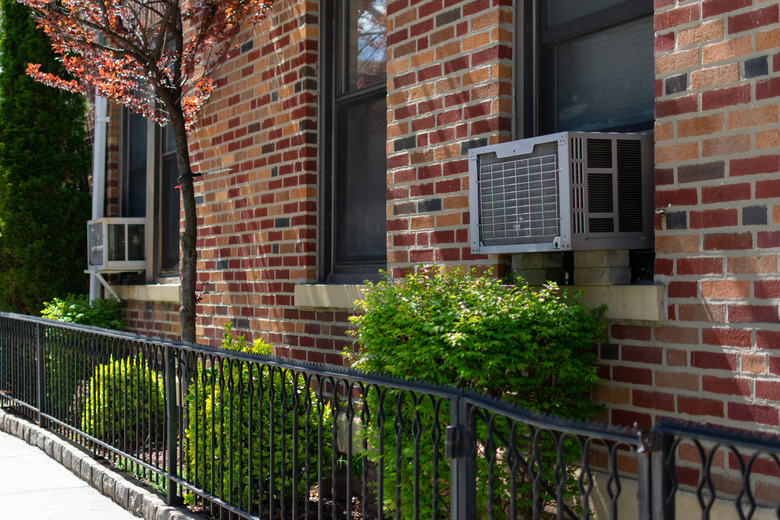How To Clean Mold From A Window Air Conditioner
We may receive a commission on purchases made from links.
Mold in a window air conditioner can pose a threat to your family's health, so cleaning the mold quickly and safely is essential. If the mold is limited, you can usually clean it and continue using the unit. However, if the mold is covering a large portion of the inside of the air conditioner, including areas where you can't reach easily by taking off the front cover, it's best to get a new window air conditioner and get rid of the old one.
Dangers of Air Conditioner Mold
Dangers of Air Conditioner Mold
Not all mold is toxic mold, but many types can cause health problems, especially when you breathe in the spores. Mold can create allergens and irritants that can cause an allergic reaction in some people. You might notice sneezing, red eyes and irritation to your skin, eyes, mouth, nose and lungs. If anyone in your family has asthma, breathing in mold spores can cause an asthma attack.
Identifying Mold in Air Conditioners
Identifying Mold in Air Conditioners
In some cases, you can see the mold growing on the outside of the air conditioner, especially if the humidity in your house is high. Sometimes, you have to open the front panel of the air conditioner to see the mold if it's mainly growing inside the unit. Mold can appear as clumps or streaks and is usually brown, black or green. It is sometimes fuzzy. Mildew can appear powdery with a gray or white color.
You can often smell the mold while the air conditioner runs. If you notice a musty, moldy smell in the same room as the window air conditioner, try shutting it off to see if the smell decreases. You can also get close to the air conditioner to see if the smell is stronger in that area.
Preparing to Clean
Preparing to Clean
Wear protective gear when cleaning mold to minimize breathing in the spores. If you use any chemical cleaners, the protective gear minimizes contact with your skin and can prevent injuries. Wear a mask over your nose and mouth. Wearing protective goggles over your eyes is also a good idea, as is wearing long sleeves and long pants. Put on gloves when you use chlorine bleach or other cleaners.
Removing the air conditioner from the window is the easiest way to clean it. If you leave it in the window, unplug it before doing anything. Take the air conditioner outdoors for cleaning to keep mold and chemicals out of your home. Remove the front panel of the air conditioner so you can clean inside. You might need to use a screwdriver to remove the panel.
Cleaning the Air Conditioner
Cleaning the Air Conditioner
Regularly cleaning your window air conditioner can prevent mold growth, but special cleaning to remove the mold first gives your unit a fresh start. Remove the filter, which is inside the front cover, clean it in hot, soapy water and rinse it well if it's reusable. If it's not or if it's full of mold, replace it with a fresh filter. Use a wet/dry vacuum to remove any dirt or debris in the unit.
Mix anti-bacterial dish soap with warm water to create a safe cleaner. If you prefer to use something a little more serious than you can there are cleaners on the market that are made to specifically clean the AC unit without harm and even help prevent future build up. Be sure to follow all safety instructions recommended labeled on the cleaner you choose. Use a scrub brush to clean off the areas of mold you see. Wipe down the air conditioner with a clean cloth to remove the cleaner.
Dry the surfaces of the air conditioner after you're done cleaning. Wait to put the air conditioner back together until the unit dries completely. Giving it at least 24 hours gets rid of all of the moisture to prevent more mold from growing.
Preventing Future Mold
Preventing Future Mold
Keeping the humidity low with the use of home dehumidifiers or an air conditioner with humidity control cuts down on mold growth. When possible, avoid long periods of not using the air conditioner, especially during warm periods. Warm, moist air with no airflow creates ideal mold growth conditions. Keeping your window air conditioner clean also helps reduce mold growth.
